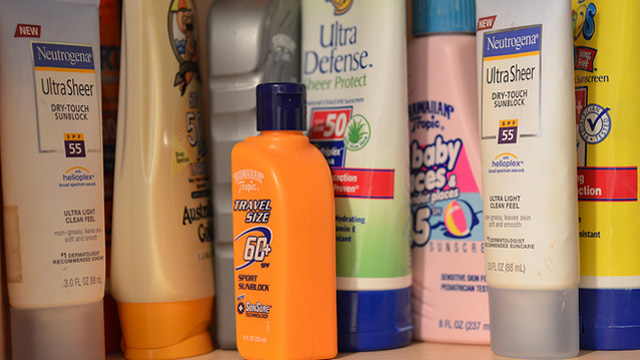
I’m one of those grocery shoppers who flips a package around to check the ingredients on a label before buying it for the first time. Checking food packages is easy, because I expect to see only recognizable simple ingredients. What about sunscreen? How can you tell if it’s safe?
The Environmental Working Group (EWG) has done extensive research to evaluate the effectiveness and safety of over 1800 sunscreens on the market so you don’t have to. Their Sixth Annual 2012 Sunscreen Guide lists the best and worst sunscreens. It’s worth a look to make sure your sunscreen isn’t in their “Hall of Shame.” The EWG also provides detailed information about potentially harmful sunscreen ingredients.
There is general concern over the large number of sunscreens with exaggerated SPF claims. The SPF (Sun Protection Factor) indicates the level of protection that a sunscreen offers against UVB -- the ultraviolet rays that cause sunburn. For instance, SPF 15 sunscreen protects against 93% of the sun’s UVB rays and SPF 50 protects against 98%. Users of high-SPF sunscreens often increase their risk of sun damage by staying out in the sun longer with a single application.
Many of these high-SPF sunscreens provide little protection from UVA rays, which are more deeply penetrating and 30-50 times more prevalent than UVB rays. Research shows that UVA radiation causes skin damage and increases the risk of cancer. It is important to use a sunscreen with zinc oxide, titanium oxide or 3% avobenzone so it protects against both UVA and UVB.
People also don’t use enough sunscreen to get the benefit of the SPF rating promised on the bottle. According to the EWG, people typically use 25% of the recommended amount so SPF 100 to 15 sunscreens actually perform like SPF 3.2 to 2.
